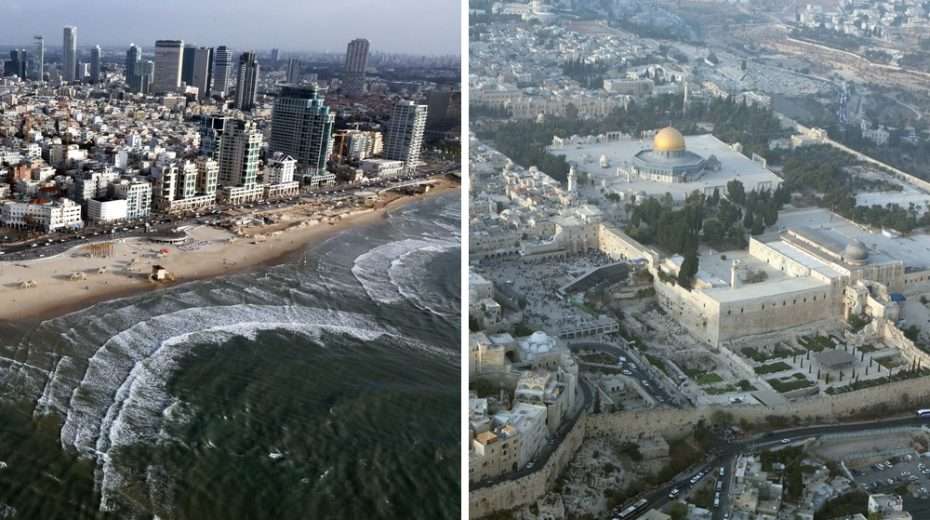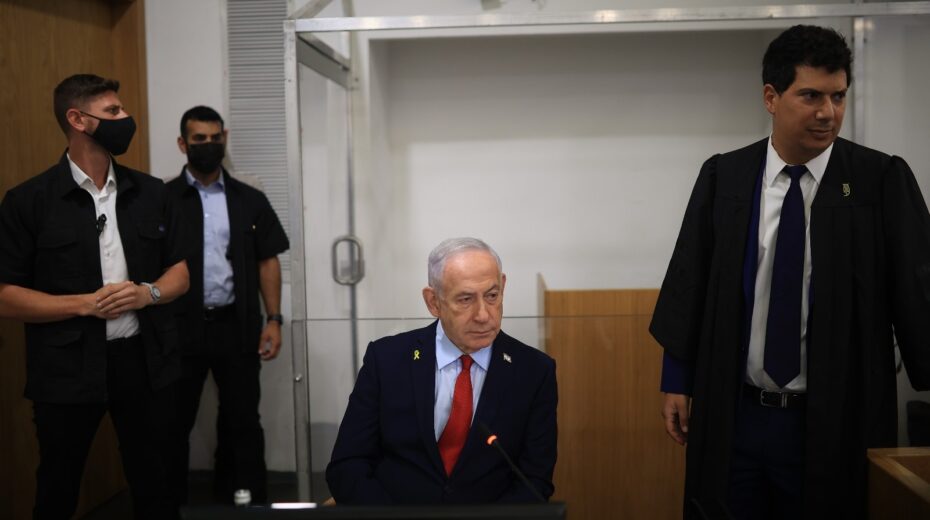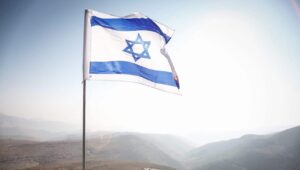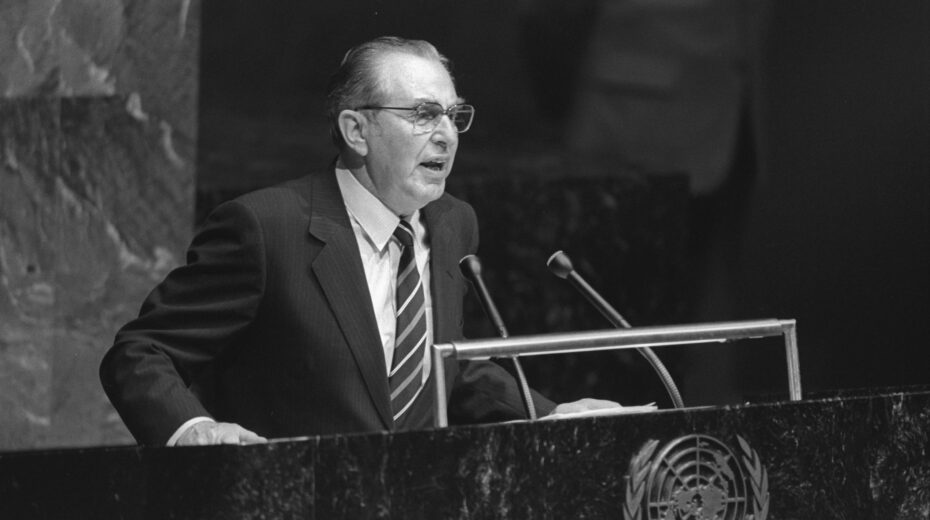Even in biblical times, Jerusalem and Tel Aviv functioned as two spiritual centers among the people of Israel. In Jerusalem the Temple served the people and in the diaspora it was Tel Aviv, which is the same name mentioned in Ezekiel 3:15 though it is spelled Tel Abib.
“And I came to Tel Abib to the captives who dwelt by the Kebar River, and as they sat there I sat down there also, and marveled among them seven days.”
King Nebuchadnezzar was the first to bring the children of Israel into captivity to Babylon. At the same time the prophet Jeremiah was active in Jerusalem. In the immediate vicinity, the Assyrian empire that had ruled the region for 300 years was slowly crumbling.
Meanwhile, to the East and South, two new superpowers, Babylon and Egypt, fought to replace Assyrian rule between the Euphrates and Sinai. In the thick of it was the biblical kingdom of Judah, caught in something of a quandary over the geopolitical strife between the two superpowers. It was in this spiritual and political environment that the prophets moved. For 20 years Ezekiel served as Prophet in the Babylonian exile on the banks of Kebar, a tributary of the Euphrates near Tel Abib.
Both centers of faith – Jerusalem in the Land and Tel Abib abroad – shaped the Jewish people some 2,500 years ago. Before his listeners, Ezekiel prophesied of the impending destruction of Jerusalem and the future redemption of Tel Abib. Just as in these days Jerusalem on the mountains and Tel Aviv on the seashore seem like two opposite poles in the Land (faith and science), so at the time of Jeremiah and Ezekiel, Jerusalem and Tel Abib were two different centers of faith among the Jewish people.
The sons of priests
Ezekiel was the son of the priest Buzi, whose name means “God strengthens.” Jeremiah was the son of Hilkiah the priest and lived under Judah’s kings Josiah, Jehoiakim and Zedekiah. His name means “God’s name is exalted.” During these year the people lived in exile. It is much the same today, with the majority of the Jewish population living in North America and Europe rather than in their own country.
In Israel, as abroad, God must be served. Jeremiah ministered to those who remained in Jerusalem, and Ezekiel to those in exile. Each Jewish community had its own unique needs, and this is evident in the different promises of the two prophets.
Ezekiel prophesied almost 1,000 km east of Jerusalem in Tel Abib on the Kebar River. He reminded his listeners that God’s voice can also be heard in exile and that the Almighty will not forget His children abroad. He also spoke his promises to the Jews in Zion from time to time.
Ezekiel prophesied to the exiles in Babylon who had lived there for five years. King Zedekiah was ruling Jerusalem at the time, planning an uprising against the Babylonian conquerors shortly before the destruction of the Temple.
In his first promise, Ezekiel speaks of the wheels of a living chariot touching the earth. His prophecies contain mysterious accounts, such as the appearing of the glory of God, which Ezekiel also takes with him on journeys where he saw a temple and Jerusalem. Jews in Babylon longed for Zion, their homeland, and the Temple. In his promises, Ezekiel responds to the questions and voices of the exiled Jews in Tel Abib. How is a Jewish life in exile possible? Is the diaspora a punishment? What does that say about the exiles? What does that say about those who stayed behind in Zion? Ezekiel addressed the hearts and needs of the Jews in Babylon.
Up until the destruction of Jerusalem, Ezekiel called the Jews of Babylon to acknowledge their transgressions and accused them of being exiled to Babylon because of their sins. He warned them that unless they repented, Jerusalem would be destroyed and they would become slaves. Just as the prophet Jeremiah was ministering in Israel at the same time, Ezekiel warned that the Temple in Jerusalem is not an automatic guarantee of defense or salvation. In addition, Ezekiel, like his colleague in Jerusalem, warned of the false prophets among the people and signaled that political machinations against Babylon were to no avail. Both Ezekiel and Jeremiah foretold and witnessed the destruction of the Temple, Jeremiah in the Land and Ezekiel from abroad.
Jeremiah was a prophet of lamentation. His prophecies showed his great knowledge of the geopolitical situation in the ancient Near East. Serving as a prophet in Jerusalem for over 40 years, he foresaw political processes like the destruction of the kingdom of Judah and the trauma of exile. In his promises he criticized the people of Jerusalem, he criticized false covenants that were unclean in God’s sight.
Jeremiah prophesied this disaster over and over again. He warned the people of Judah that it is not good for Israel to make military pacts and surrender to corrupt financiers. And yet they followed the false prophets. The people trusted other voices that raved about the liberalization of the financial market. The same can be said of Israel in our day. One has to ask: Do the people follow God, or new ideas?
On the other hand, Jeremiah was also a political realist and said that whoever wants to survive must emigrate to Babylon:
“Whoever remains in this city will either die by the sword or of hunger or of the plague. But whoever goes out and goes over to the Chaldeans who are besieging you, he will live and take his life as spoil.”
In the way that Ezekiel addresses his congregation in Babylon, so Jeremiah speaks to his here in Judah. His promises are relevant these days as well, a moral and loud voice against the complex politics in the modern State of Israel. Today we hear similar things, how many Jews seek a foreign passport so they can flee the country. After all, if even a prophet like Jeremiah suggested leaving for the sake of survival, then it must still be permitted to do so today.
After the destruction of the Temple, Ezekiel stopped prophesying reproof and calamity and went on to prophesy comfort for the people of Israel. He proclaimed the return of the exiles to the Land of Israel and saw the rebuilding of the Temple. Ezekiel proclaimed a glorious future for a renewed people in the Land. Ezekiel describes his prophecy with visions and pictures of a new future and emphasizes this with God’s active work in words like “the hand of God” and “the Spirit of God.” Ezekiel’s dramatic vision of the “Valley of Dry Bones” while still in exile in Tel Abib so many millennia ago foretold the restoration we have seen in our days. And in so doing, he gave the exiled Jews on the shores of the rivers of Babylon new hope.
Ezekiel’s vision refers to a political restoration of Israel, a “resurrection of the people.“ The idea that God also intervenes in the “realm of the dead” and frees his people from it is not unique to Ezekiel. In the modern history of Israel, the biblical text took on a new application through the atrocities of the Holocaust in the last century.
Whether in Jerusalem or in Tel Abib on the Kebar River or in Tel Aviv on the Mediterranean seashore – the God of Israel was then and now, in the Land or in exile, the same God. But the people of Israel are also the same people who bring both joy and sorrow to God in every generation, whether in Jerusalem or in Tel Aviv.














